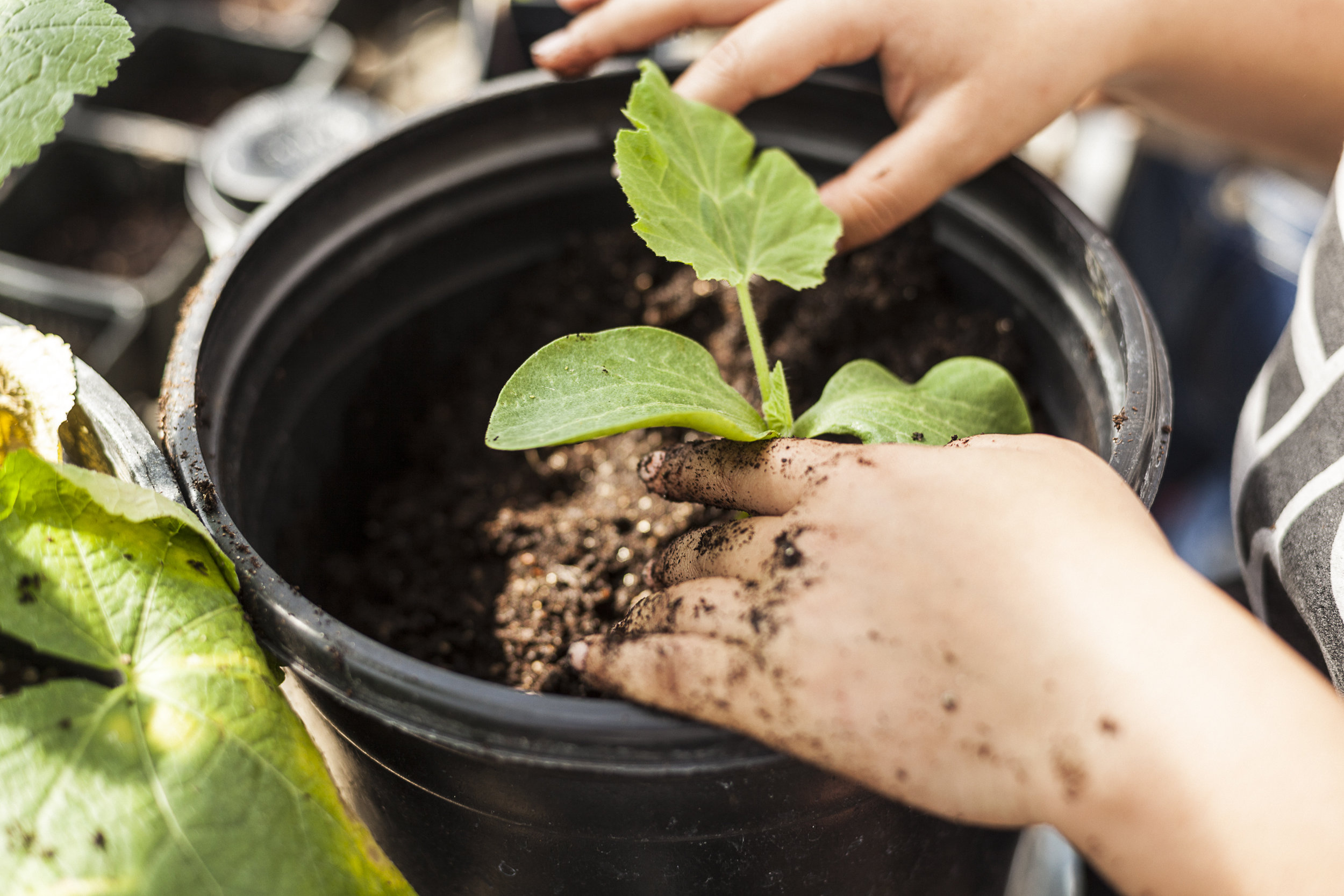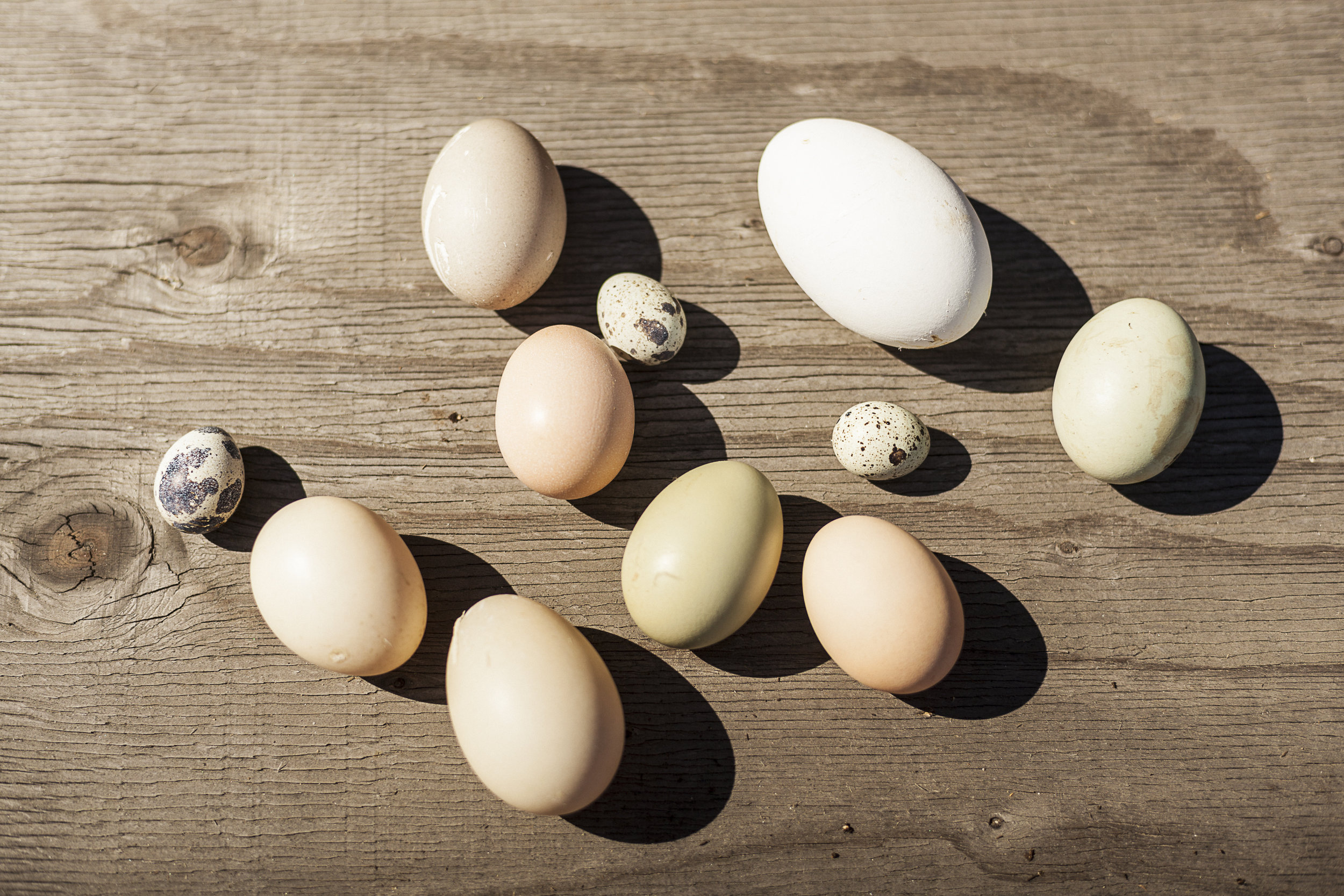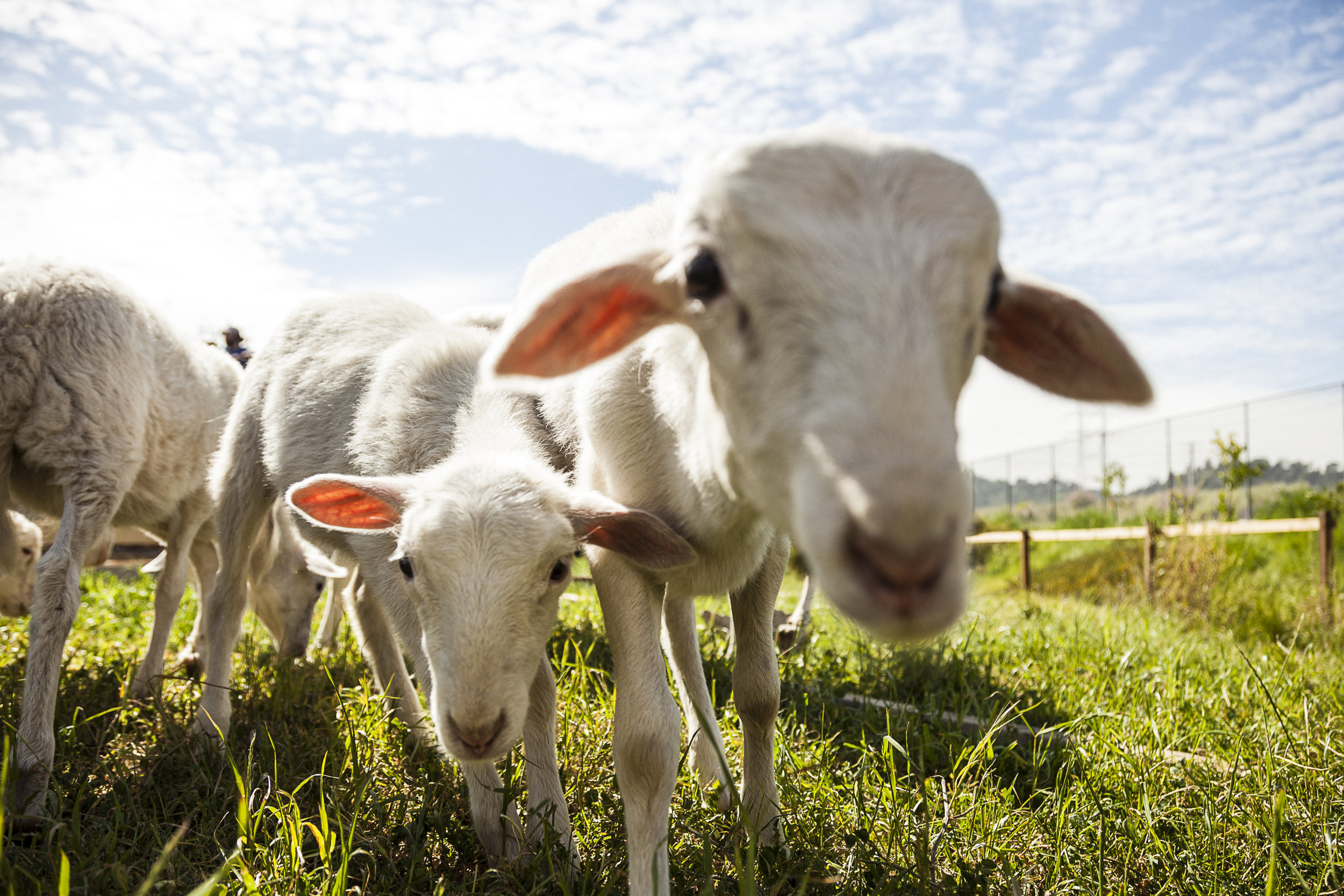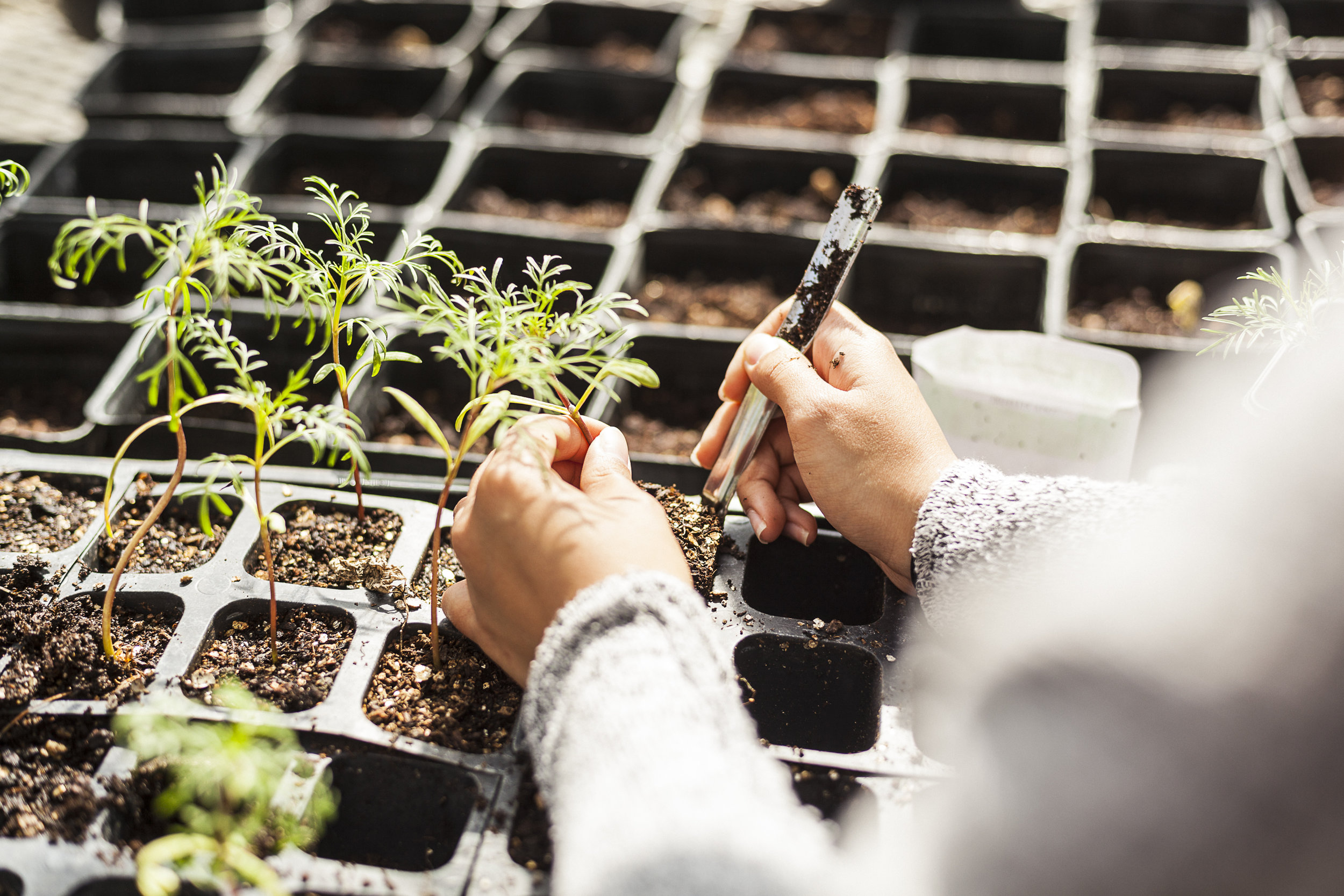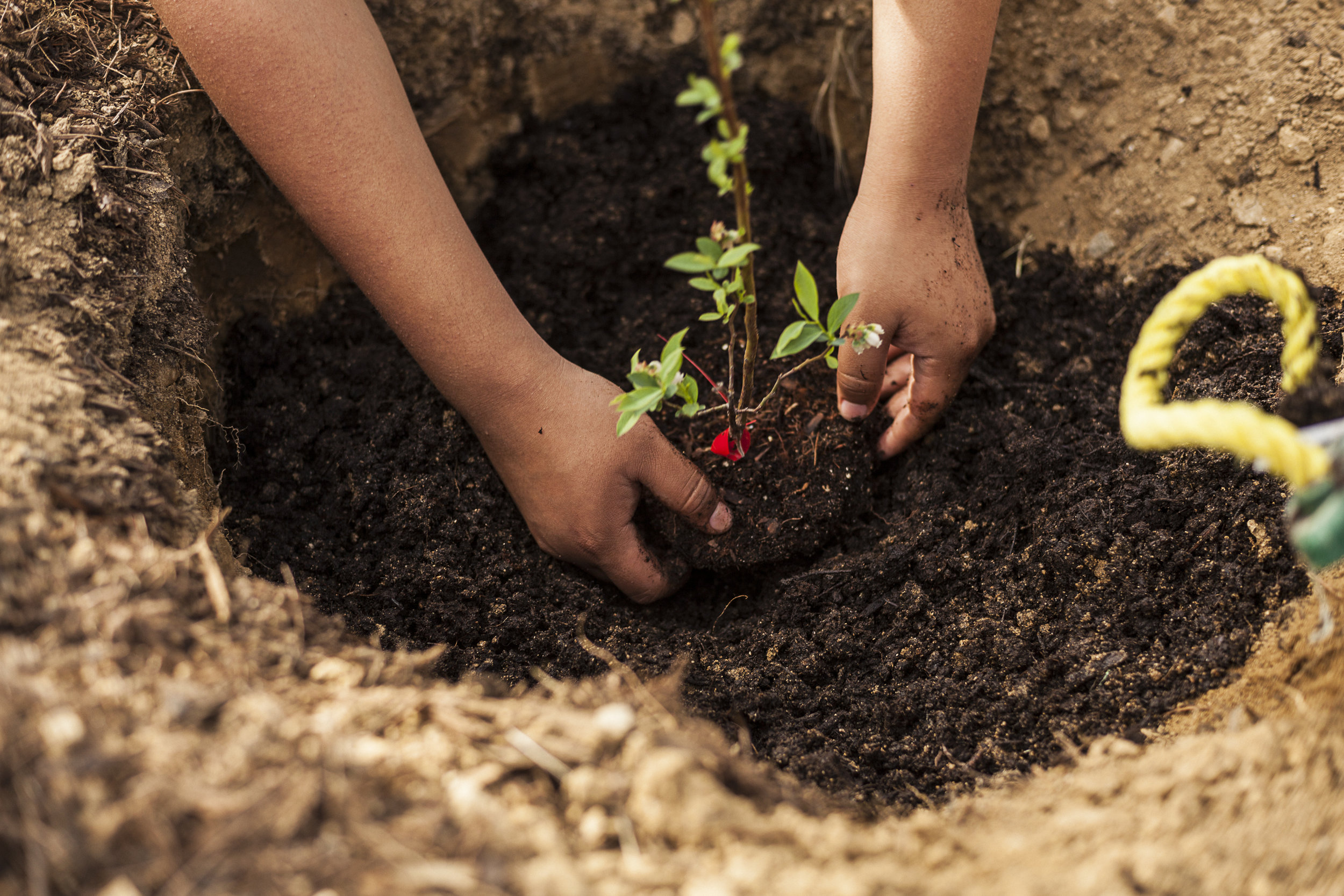The Soul of a School: An Environmental High School Takes on an Urban Farm
Los Angeles River High School (lariverschool.com) has been around for six productive years now. Its principal, Kristine Puich, dressed in black with high boots, gold hoops in her ears, and a chattering walkie-talkie swinging at her belt, strides on ahead during my tour.
“You’ll like this,” she says.
The bracing wind tears down a central corridor, its curve mimicking the banks of the river just over the way. We go through a chain-link gate, past the football field, and end up in an area landscaped with rocks and concrete steps; students are hunched over pads as they focus on their work.
Los Angeles River High School | Photos by Alan Gastelum
“This is our science and art teacher, Reies,” she says, introducing me to a lively guy in a hoodie with a big smile. Reies Flores turns out to know or thing or two about plants. And it’s here, at the most far-flung edge of the campus, that he's relied on the help of the students - and his considerable talents - to create a rare urban farm.
The first thing I see: Cabbages. Broccoli. A stalk of oversized kale that resembles a Dr. Seuss-like tree. The flash of mallard plumage. The bustle of a gaggle of geese. Neat paths covered in mulch, which were donated by the city. A large greenhouse and worm and compost bins.
The garden occupies about an acre in the crux of the I-5 and Route 2 in Glassell Park. Scruffy and peaceful, it’s adjacent to the former Taylor Yard, a Southern Pacific Railroad facility, and trains still roar on by.
The students are enthusiastic about the experience, seeming to love being outside caring for the garden and the animals. One student says she sees everything in a different way now. Before this class, she knew vegetables, but now she’s experienced making contact with the seeds and plants and actually seeing and paying attention to how they grow. Another student tells me how she’ll incorporate a garden into her own life once she graduates and goes out into the world.
Flores grew up not far from here in Northeast LA. His favorite time as a child was spending time with grandma in her kitchen. She’d cook and tell stories about her childhood in the 20s in Zacatecas, Mexico, on what we would now call an organic sustainable farm. He met his wife, also a teacher, at Irving Middle School, then ended up starting his own farm when his daughter was born, since he wanted to feed her food that he knew was safe from pathogens.
Luckily for Flores, he landed at the LA River High School where principal Kristine Puich (herself relocated from Oakwood School) is all about encouraging creativity in her educators. She loved Flores’ urban farm experience, suggested he develop the unused plot, and then went to work getting an environmental California Partnership Academy (cde.ca.gov) grant and the necessary certifications to make it all real.
Here, the kids are an integral part of the mix. Each small group is responsible for its own garden bed.
“I’ve never seen anything like this,” Flores says. “Honors students and ESL students and special interest students - they can all feel equally happy here. There’s no buy-in for the garden. It’s automatic and right away.”
The students take the produce home and sometimes even the animals, too (ducks are popular; the geese, not so much). Like many Americans, these kids, too, have gotten fuzzy about how food actually makes its way onto dinner plates. Some of the students couldn’t believe that broccoli actually bloomed (it does - brassica oleracea goes to seed and attracts a lot of beneficial insects.)
“It’s really grounded the kids,” Puich says. “They’re calmer now. More focused on their academics. And the only shift we’ve made is the farm.”
In the 90’s there were a lot of agriculture programs in LA Eastside public schools, but it became politically troublesome. Some felt that the kids were being pushed, unfairly, into these more vocational schools and so many of the programs were halted and the students were encouraged to go to college instead. Now the programs are starting to return, but reframed as a more technical pathway of producing well-rounded, environmentally-aware graduates who may end up in agriculture and urban development. Next up in the school’s agricultural pathway is an urban farm-to-table cooking class.
“We’ll be using the produce in stir-fries and soups, as well as dairy and eggs. Pretty much everything,” Flores says.
In addition to the edible plants, there are the vociferous geese — endangered breeds like Pilgrim, great watchdogs who love to sound an alarm, as well as blue-eyed Embdens and a gorgeous Sebastopol with a frizzle of curly feathers resembling Farrah Fawcett’s long-ago bangs.
The geese, the very intense geese, crowd forward hissing and honking as I beat a retreat. “They’re protecting a nest,” Flores says.
There’s also a long, low coop for the brace of Mallard, Muscovy, Russian Black and Whites, and Swedish blue ducks, as well as a separate enclosure for the equally talkative roosters. The fluffy yellow chicks were warmed inside the greenhouse for months, but now they’re feathered adolescents, milling about in the yard. Along the back of the property, a drift of orange and grey pigs (yes, a drift — one learns a lot of animal collective nouns on an LA Unified farm!) crowd against the gate. The biggest and most curious, Cheeto, props his hooves on the wood to get a good look. His snout is much bigger than expected, round and pulsing. I feel unnervingly scanned and then, just as quickly, discarded as an inedible lifeform. These kunekune pigs are from New Zealand.
“They used to clean up the scraps in the Maori villages,” Flores says. Here they perform a crucial function for the community, enthusiastically eating all the meat-based waste (except, luckily for them, the pork) from the five school cafeterias, while the vegetable-based waste is shunted to the chickens, the worms, and the compost bins.
A new herd of sheep has just come to live in a pen by a lot full of school buses. The next purchase will be a miniature Dexter cow. Flores plans to teach the kids how to milk cows and make butter, cheese, and yogurt. The sheds and gates are also recycled, constructed almost entirely out of wooden pallets from the football field. An elevated orchard wraps along the backside of the lot. Preparations are in the works for more edible beds here as well, closest to the river and alongside a native swale area, a riparian tract that holds moisture and thrives with indigenous breeds such as willow and cattail. Juncus grass with its spiky green leaves has grown here as far back as when the Tongva, a local Native American tribe, used it to roof their huts.
Whole systems agriculture like this uses natural spaces to attract wildlife and they in turn are good for the garden. Herons, egrets, and hawks, both Cooper’s and Redtails, regularly land for a pit stop. The Mallard ducks, the wildest of the bunch, sometimes take off for a spin around the land.
The end goal here at LA River High School is to set up a program that will be seen as a necessity to deal with waste and avoid the landfill. The school has so far accomplished this with five public schools on their campus. The next frontier would be the district and on from there. The big idea is to recycle things to help grow other things and eventually get to producing absolutely zero food waste.
Standing here on the banks, the tended plants and animals on one side and the wild scruff of a river making a comeback on the other, it all makes a whole lot of sense.
Just then those geese get to honking and Flores grins.
“Train’s coming,” he says. ◆


